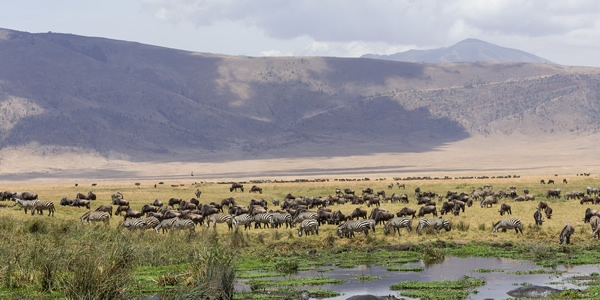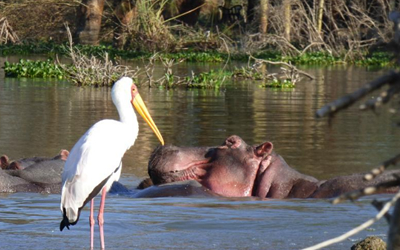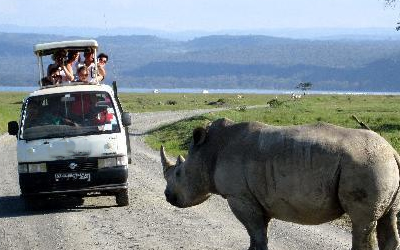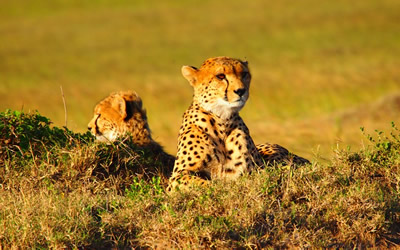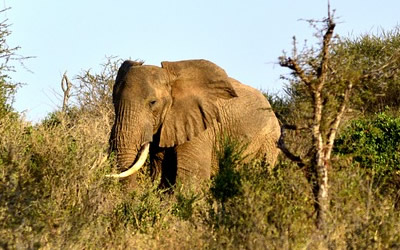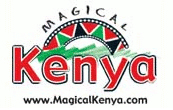Ngorongoro is mostly occupied by the Maasai and was named by them as El-Nkoronkoro meaning Gift of Life. Land in the conservation area is multi-use and unique because it is the only conservation area in Tanzania that protects wildlife while allowing human habitation. Land use is controlled to prevent negative effects on the wildlife population. For example, cultivation is prohibited at all but subsistence levels.
Ngorongoro Crater
The main feature of the Ngorongoro Conservation Authority is the Ngorongoro Crater, the world's largest inactive, intact and unfilled volcanic caldera. The crater, which formed when a large volcano exploded and collapsed on itself two to three million years ago, is 610 metres (2,000 feet) deep and its floor covers 260 square kilometres (100 square miles). Estimates of the height of the original volcano range from 4,500 to 5,800 metres (14,800 to 19,000 feet) high.
The crater highlands on the side facing the easterly trade winds receives 800 to 1,200 millimetres (31 to 47 inches) of rain a year and are covered largely in montane forest. The less-steep west wall receives only 400 to 600 millimetres (16 to 24 inches) and is grassland and bushland dotted with Euphorbia bussei (es) trees. The crater floor is mostly open grassland with two small wooded areas dominated by fever tree (Vachellia xanthophloea).
The Ngorongoro Crater is a well-known tourist attraction because of the variety of animals present within.
The Ngorongoro Conservation Area also protects Oldupai Gorge, situated in the plains area. It is considered to be the seat of humanity after the discovery of the earliest known specimens of the human genus, Homo habilis as well as early hominidae, such as Paranthropus boisei.
Approximately 25,000 large animals, mostly ungulates, live in the crater. Large animals in the crater include the black rhinoceros, the African buffalo or Cape buffalo, and the hippopotamus. There also are many other ungulates: the blue wildebeest, Grant's zebra, the common eland, and Grant's and Thomson's gazelles. Waterbucks occur mainly near Lerai Forest. Tanzanian cheetah, East African wild dog, and African leopard are rarely seen.
Although thought of as "a natural enclosure" for a very wide variety of wildlife, 20 percent or more of the wildebeest and half the zebra populations vacate the crater in the wet season. Buffalo and eland do the opposite. Their highest numbers are during the rains.
Lake Magadi, a large lake in the southwest of the crater, is often inhabited by thousands of mainly lesser flamingoes. The crater has one of the densest known population of Masai lions.

